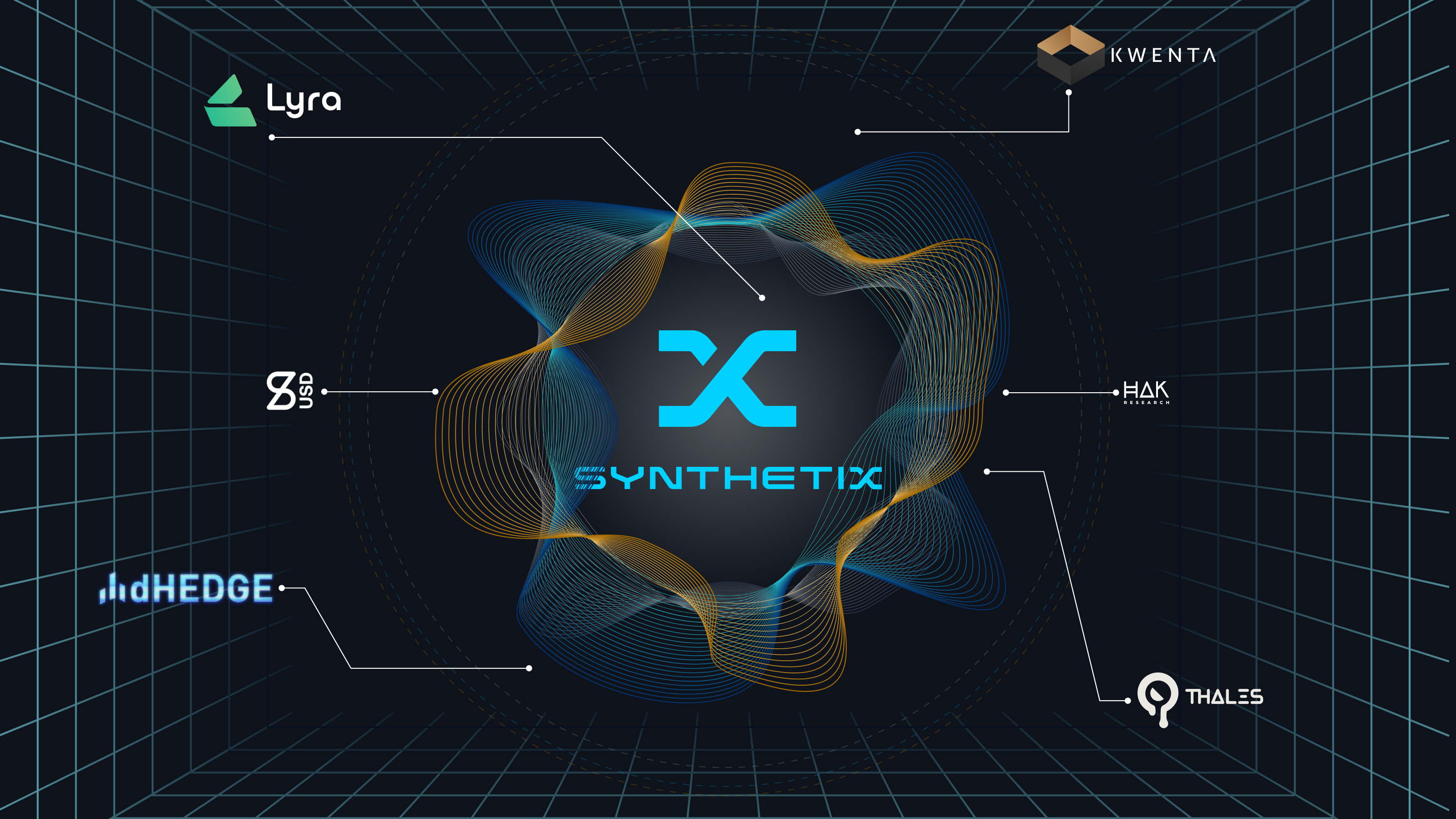Synthetic Assets or synthetic assets are a very popular concept in DeFi. This is a general concept for tokens that track the value of another type of asset, including assets in the real world, physical and digital, or assets in the Blockchain world.
So what types of Synthetic Assets are currently available, what role do Synthetics protocols play in the DeFi market? Please join me in reading this article.
Synthetic Assets Overview
Synthetic Assets are tokens that track the value of other assets, so “other assets” here could include:
- Real world stocks, bonds, real estate: At this time, synthetic tokens of real stocks and bonds are also known as Real-World Assets tokens. Synthetic assets will track the value of stocks, bonds, or real estate. For bonds, it also simulates its yield, becoming profit-bearing tokens.
- Fiat currency, precious metals: These are synthetic tokens that simulate the value of fiat currencies or precious metals, more widely known as Stablecoins. Fiat stablecoins such as USDT, USDC and metallic stablecoins such as PAXG (digital gold) by Paxos.
- Decentralized stablecoins: Decentralized stablecoins, issued through CDP protocols, are also considered synthetic tokens. Take MakerDAO’s DAI for example, this stablecoin simulates the value of USD, while backed by ETH, USDC and many other assets from RWA.
- Wrapped tokens: Wrapped tokens are also synthetic tokens, these are tokens whose value is guaranteed by the same number of tokens on blockchain A and then release a wrapped version on blockchain B. Typical examples are WBTC on EVM Chain, WETH on BNB Smart Chain. Wrapped tokens are also used to “unlock liquidity” for tokens that are not freely tradable.
- Derivative contracts: With some protocols, derivative contracts can be tokenized, becoming a clearly valued asset, used in other financial activities. For example, options contract positions on Opyn can be tokenized into oTokens.
- NFT basket: Tokens that represent the value of a set of NFTs, or simulate the value of a basket of NFTs, are developed and used to enable derivative trading of NFTs with a high level of liquidity. . This is also a synthetic token with a very new concept.
- Tokens bring profit: The market today has countless yield-bearing tokens, which are all tokens that track the value of another asset, while also simulating the interest rate of those assets in an activity. certain. For example, Compound’s c-Tokens, sDAI, Liquid Staking Tokens, yield-bearing stablecoins, etc.
In summary, with the above type of Synthetic, it can be seen that Synthetic Assets is a general concept that refers to tokens that simulate the value and profitability of other assets both in the real world and in Blockchain, including physical assets and digital assets.
There are many ways to release Synthetic Assets, serving each type of Synthetic Assets. For example, centralized stablecoins such as USDC and USDT are minted through the services of centralized companies such as Circle and Tether.
RWA tokens can be minted through RWA protocols such as Ondo, Centrifuge with real asset collateral and are valued by the teams of the above protocols. In addition, the CDP model is also very popular in mortgaging tokens in exchange for other tokens in the form of debt positions.
Featured Synthetic Projects
Currently, there are about 36 projects in the Synthetic group with approximately $1B TVL according to DeFi lamma, however in reality there are many protocols that generate Synthetic assets according to the above definition that are not listed.
MakerDAO

Maker Dao was launched in 2014, as one of the first platforms to best support capital efficiency on Ethereum. The platform allows users to mortgage assets into the protocol and get stablecoins to use for other things. This is similar to a bank but without a third party as an intermediary, users will interact directly with the platform. boulder. This helps users not need to sell their assets but still have money to use for other things.
MakerDAO is the largest synthetics project on the market as a CDP to support the issuance of stablecoin DAI. The role of MakerDAO and the role of DAI are very important to the crypto market as DAI is currently the 3rd largest stablecoin in the market, and is used in almost every protocol on Ethereum and EVMs. Other blockchains.
Synthetix

Synthetix is better known as a liquidity hub for an ecosystem of derivative trading products from perps, options to prediction. Essentially Synthetix allows users to print, trade and hold various types of derivative assets that represent the prices of real-world assets such as commodities, fiat currencies (INR, EUR, USD) and cryptocurrency (ETH, BTC, LINK).
These derivative assets on the Synthetix platform are called Synths. Through other Dapps built on Synthetix, users can trade Synths in large volumes without worrying about liquidity limits. At present, Synthetix cooperates with Chainlink to update the price of Synths closely to the prices of the assets it represents.
The widely used Synthetic token in the Synthetix ecosystem is sUSD. By mortgaging SNX to mint sUSD, users can participate in using products on Synthetix’s ecosystem with sUSD as the main currency in this economy:
-
Kwenta: Kwenta is a decentralized derivatives exchange with an AMM model developed on the Optimism ecosystem (Optimistic roll-up Layer 2 on Ethereum). With sUSD’s liquidity advantage, Kwenta inherits a slippage-looking perps trading model and is also one of the leading large perps exchanges in DeFi.
-
Lyra: Lyra is a decentralized options exchange based on AMM mechanism located on Optimism – L2 of Ethereum. The v2 version of Lyra targets a layer 2 appchain using the OP Stack toolkit.
-
Thales: Thales is an outstanding project in the BO segment of the Synthetix ecosystem. BO is a form of predicting the price of a trading currency pair in a certain period of time.
-
dHEDGE: dHEDGE is an asset management protocol built on Ethereum.
The case of Synthetix shows that creating a liquidity model based on synthetic tokens and leveraging this liquidity source in a local ecosystem is very feasible and has also proven its effectiveness.
Alchemix

The Alchemix project is characterized by the CDP self-repaying loans mechanism, which are loans that are automatically repaid in installments of principal and interest. Essentially, Alchemix pools the collateral that users deposit into the protocol, uses those assets for farming on Yearn Finance, and then collects profits to gradually repay users over time.
Currently, Alchemix offers two types of loans: alUSD with stablecoins pegged to USD (usually DAI), and alETH with loans collateralized with ETH. alUSD and alETH are synthetic tokens, which can be freely traded, with value depending on USD and ETH.
ETH and DAI used as collateral will be farmed on Yearn Finance to generate profit. The profit amount is automatically deducted from the debt principal. This lending method is to avoid the pressure of liquidation of the loans.
Risks of Synthetic Projects
Synthetic assets are tokens that track the value of other assets, so when talking about synthetic tokens, always pay attention to the peg level of that token compared to the underlying asset it represents. However, the peg level is not always guaranteed 1:1, and the risk of depeg for synthetic tokens always exists, especially for tokens with low capitalization.
Summary
Above is an overview article about Synthetics and Synthetics projects in DeFi. Synthetics is an indispensable piece of DeFi and more and more unique forms of Synthetics are appearing.


